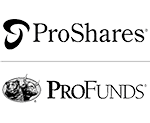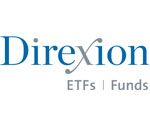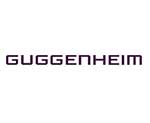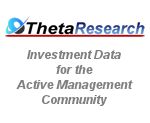There are two schools of thought about investing – buy-and-hold investing and active management. Those in each camp believe strongly in their position. Let’s take a closer look.
- BUY-AND-HOLD INVESTING
Buy-and-hold investing is a “passive” investment style in which an investor buys equities and holds them for a long period of time, regardless of fluctuations in the market. It allows an investor (or investment manager) to strategically allocate assets in alignment with the investor’s investment goals and risk tolerance.
The buy-and-hold investment style has become very popular and proponents believe that it provides the best investor experience over time.
In an ETF.com article, the writer states, “The fallacy of the active argument is obvious on the surface: There’s no way all active fund managers can beat the market, because added together, they are the market. In a vacuum, we would expect half of these managers to underperform the market and half to beat it.
The problem is that all these managers want to be paid. Moreover, they ring up large transaction costs buying and selling stocks as they try to outperform. After fees and expenses, studies suggest that a strong majority trail the market over the long haul.
Passive investment solves that problem. Index funds are cheap to run and generally cheap to own. By capturing the market’s return at the lowest possible cost, these “passive funds” manage to outperform most active managers over the long haul.”
Time Horizon Matters
The problem with this approach for investors is that buy-and-hold investing can, at times, be a frightful and unnerving experience. This is especially true for older investors who no longer have the tolerance for risk that they once did. Further, older investors realize that their time horizon is now different than when they were younger and that their tolerance for risk is now much lower than it once was.
One of the limitations, or risks, inherent in buy-and-hold investing is that the investor must endure wild swings in the market. A case can be made that for some younger investors this risk is worth taking for the long run.
Michael Lebowitz, CFA, Founder of 720 Global, says, “Buy and hold strategies that are solely focused on a long-term total return fail to consider the current state of valuations, the risk reward profile, and therefore the path of returns the market may take between now and the future. Importantly, they also ignore investor circumstances and whether he or she is a young worker in savings mode or a retiree who must draw living expenses from their account.”
Stocks and Bonds
The traditional way of hedging stock (equity) risk in an investment portfolio is the use of bonds or bond funds. It is hard to give a single and simplistic answer to the use of bonds in a portfolio because there are so many kinds of bonds and bond funds.
In many scenarios, high quality bonds or bond funds have historically lowered equity risk during periods where equities were declining. However, in the future there are two primary questions facing investors. One, in a period of potentially rising interest rates, are bond fund prices going to retain their value – and is this going to be a good antidote for stock risk in such a period?
Two, is the investor willing to accept a typically lower rate of return as equities are combined with bonds or bond funds during a rising stock market?
- ACTIVE MANAGEMENT
The alternative to buy-and-hold investing is active investment management. Active managers believe that it is possible to take less risk and/or earn greater returns by actively managing a portfolio.
There are many examples of investment managers who have demonstrated that it is possible to outperform the market over an extended period of time on a risk-adjusted basis.
In a recent Invesor’s Business Daily article, Paul Whitfield writes that there is no reason buy-and-hold investment managers should trash active management just because they disagree with it. He further points out that there are several flaws to the criticisms of active management. He writes:
Criticism No. 1: Some studies say market timers trade more frequently — and that’s a loser’s game.
The studies generally have two flaws. First, they ignore skill. The second flaw is that the studies ignore the Pareto Principle, also known as the 80-20 rule. In every endeavor, from bass fishing to investing, 20% of the participants grab 80% of the spoils.
So if we want to judge an approach, focusing on averages won’t tell us much.
Criticism No. 2: Trading costs will kill you.
This is a dated objection. Transaction costs nowadays are trivial and in some cases are non-existent.
Criticism No. 3: Taxes will erase any edge you gain.
This fate is easily sidestepped. Any employee who has built up capital in his 401k can roll that over to an IRA (without penalty) the next time he or she changes jobs. Once you gain control of the money via the IRA, you can buy and sell stocks as needed. Capital gains are sheltered until withdrawn from the IRA. And you can add funds to the IRA every year.
Where do I find an active investment manager?
Two resources for finding active investment managers are NAAIM and Theta Research. With proper due diligence, it is possible to find active investment managers who have outperformed the market on a risk-adjusted basis over time.
Ben Reppond is CEO and Investment Manager of Reppond Investments. He may be contacted at ben@reppondinvestments.com or (406) 871-3321.
Reppond Investments, Inc. is a registered investment adviser. We may not transact business in any state where we are not appropriately registered, excluded or exempted from registration. Individual responses to persons that involve either the effecting of transactions in securities or the rendering of personalized investment advice for compensation will not be made without registration or exemption.
Investment Advisory Services offered through Reppond Investments, Inc.















